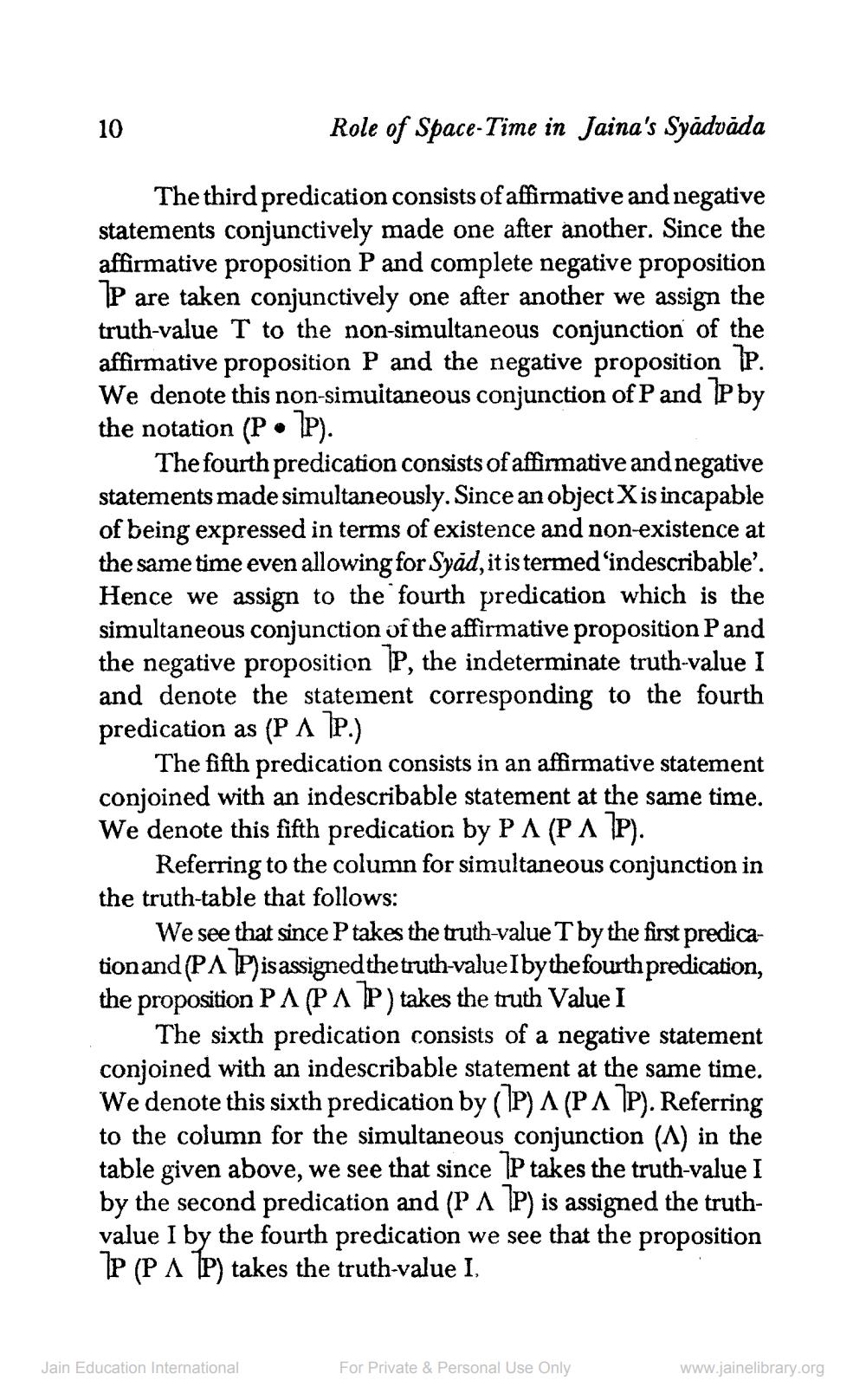________________
10
Role of Space-Time in Jaina's Syädväda
The third predication consists of affirmative and negative statements conjunctively made one after another. Since the affirmative proposition P and complete negative proposition
P are taken conjunctively one after another we assign the truth-value T to the non-simultaneous conjunction of the affirmative proposition P and the negative proposition P. We denote this non-simuitaneous conjunction of P and Pby the notation (
P P ). The fourth predication consists of affirmative and negative statements made simultaneously. Since an object X is incapable of being expressed in terms of existence and non-existence at the same time even allowing for Syäd, it is termed'indescribable'. Hence we assign to the fourth predication which is the simultaneous conjunction of the affirmative proposition Pand the negative proposition P, the indeterminate truth-value I and denote the statement corresponding to the fourth predication as (P A P.)
The fifth predication consists in an affirmative statement conjoined with an indescribable statement at the same time. We denote this fifth predication by PA (PAP).
Referring to the column for simultaneous conjunction in the truth-table that follows:
We see that since P takes the truth-value T by the first predicationand (PAP)isassigned the truth-value Ibythefourth predication, the proposition PAPA P) takes the truth Value I
The sixth predication consists of a negative statement conjoined with an indescribable statement at the same time. We denote this sixth predication by (IP) A(PAP). Referring to the column for the simultaneous conjunction (A) in the table given above, we see that since P takes the truth-value I by the second predication and (PAP) is assigned the truthvalue I by the fourth predication we see that the proposition 1P (PAP) takes the truth-value I,
Jain Education International
For Private & Personal Use Only
www.jainelibrary.org




